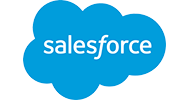It's about two and a half years since I become a chief clinical information officer, meaning I very formally became the leader of digital nursing in a trust. But when I think about it, I've always been a champion of nurses leading digital change - I just didn't realise it.
I have always sought opportunities to improve the quality of care and, right at the start of my career, I saw that digitisation could be an important way of doing this. In the late 1990s, as a junior staff nurse, I was lucky enough to work in an organisation that was very forward thinking and which implemented an electronic patient record. I immediately saw how the quality of our nursing documentation improved after the transition from handwritten notes. I became convinced of the value of digital to nursing.
I also saw how important it was to empower nurses, midwives and allied health professionals to own digital change. I saw that only by providing colleagues with the required training and skills will digital solutions be fully incorporated into nursing practice.















